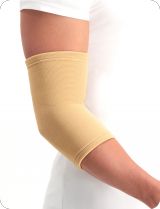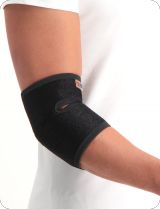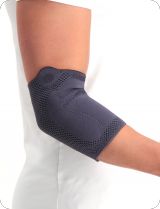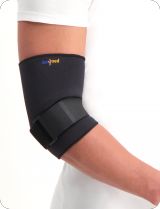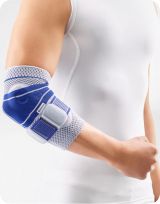Elbow - Osteoarthritis
Osteoarthritis of the elbow occurs when cartilage deteriorates in the elbow joint. All ends of the three parts of the elbow joint are covered with joint cartilage. This can be up to 6 mm thick. In the elbow, however, it is somewhat thinner. Cartilage is springy tissue and contains no blood vessels or nerves. Due to the smoothness, the joint surfaces cannot move against each other in a damaging way. Wear is said to be present when the joint surface is rough instead of smooth. If you would like to know more about this complaint or choose one of our braces to relieve your elbow, please read on below:
Read more »What are the symptoms of elbow osteoarthritis?
With wear, the joint surface is rough and, in advanced stages, the cartilage may even have disappeared completely. The bone ends, without cartilage as a protective layer, then come into contact with each other. The elbow can crack and there is often pain and stiffness. The symptoms will first appear during movement, but later also at rest. The function and flexibility of the elbow decrease. Turning, bending and stretching are almost impossible without pain and, in cases of severe wear and tear, fluid can also be seen in the elbow. Because of this, the elbow can sometimes look very different.
How does elbow osteoarthritis occur?
If the general practitioner or specialist attributes the pain and stiffness to wear and tear of the elbow cartilage, this is referred to as osteoarthritis. This can be caused by the ageing of the body, for example. The cartilage can also be damaged by an inflammatory reaction, such as in rheumatoid arthritis. Osteoarthritis usually occurs in both elbows. Osteoarthritis can also occur after a fracture in the elbow joint, i.e. after damage. There are also other factors that may be involved in the development of osteoarthritis of the elbow. These are heredity, obesity and intensive sports.
What treatments are there for elbow osteoarthritis?
An X-ray photo is a good way of diagnosing osteoarthritis. The decrease in thickness and the irregular shape of the joint can be clearly seen on this. In the case of incipient osteoarthritis, the doctor will refer you to a physiotherapist. He can help you with exercises to keep the muscles around the elbow joint strong and flexible. Osteoarthritis patients with trained muscles around the worn-out joint often have less pain. The physiotherapist can also improve mobility. Furthermore, they can prescribe medication against the pain, usually paracetamol. If this does not help sufficiently, the medical practitioner can prescribe pain-relieving and anti-inflammatory medicines. Sometimes, the doctor can also choose to inject the elbow, which relieves the pain in the short term. In case of advanced osteoarthritis, it may be decided to treat it surgically. During keyhole surgery, loose pieces of cartilage can be removed, and rough ligaments can be smoothed. This may reduce the pain and swelling. The surgeon may also decide to punch small holes in the bone layer during keyhole surgery, which means that the scar tissue will fill up the holes in the cartilage. This reduces pain and improves joint function. In case of severe wear, a prosthesis can be placed. To prevent wear and tear or to rehabilitate after such an operation, you can use various products. We have various elbow braces for these problems.


